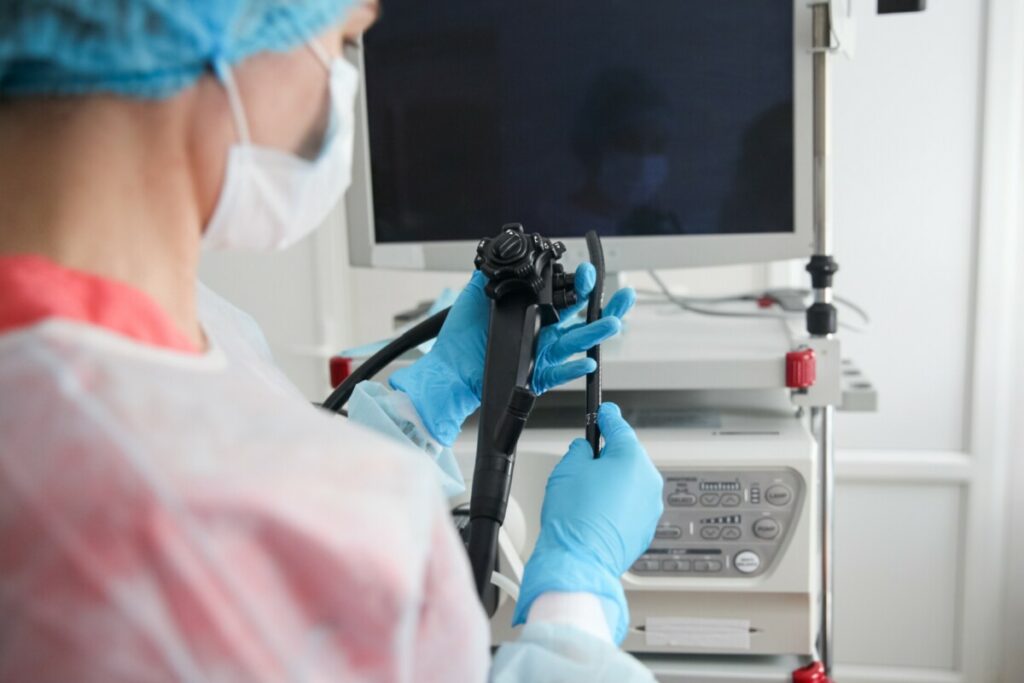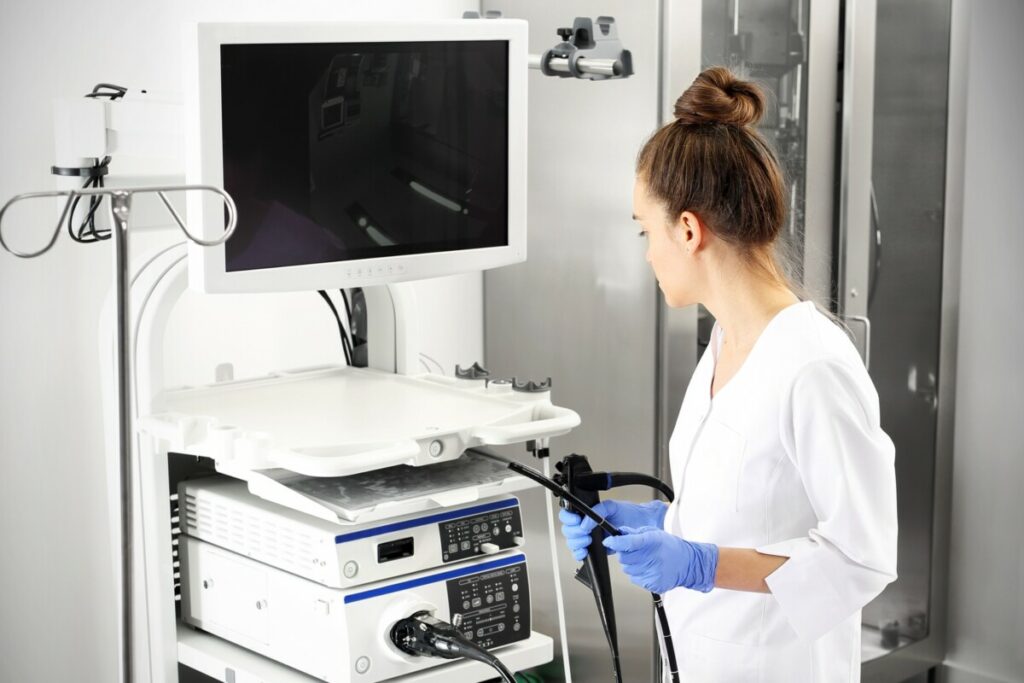This post may contain affiliate links, which means if you enroll through my link, I’ll receive a small commission at no extra cost to you.

A colonoscopy is a medical procedure that has become the punch line of dozens of jokes and that looms over those who have reached the age of 50. Even though colonoscopies are often not fun for the person having the procedure done, they are necessary. However, how much does a colonoscopy cost?
A colonoscopy costs about $3,081 for uninsured patients. If insured, it will cost about $1,000 or less. Costs will vary between states and facilities. Additional fees for things such as doctor’s consultations, anesthesia, and lab screenings will also increase the cost.
Below, I will discuss the factors that affect the cost of a colonoscopy. These will include how colonoscopy costs can vary between states, the different fees wrapped up in the cost of the colonoscopy, and which states have the cheapest colonoscopies on average. We will also briefly discuss some things that can save you money on your colonoscopy fees, including using insurance, asking for generic prescription medicines, using an alternative colonoscopy test, and more.
Factors That Influence Colonoscopy Cost
The first thing you must know before getting a colonoscopy is how much it will cost for an insured and an uninsured patient.
For insured patients, a colonoscopy will cost around $1,000, while it will cost about $2,750-$3,081 for an uninsured patient. However, they can cost up to $4,800 for uninsured patients. Keep in mind that there are many expenses that contribute to the cost of a colonoscopy.
Some of these costs may be covered by insurance, but others may not depending on a variety of factors. When preparing to have a colonoscopy, you should be given a bill with your projected costs for the procedure. Be sure to ask your doctor if you have any questions about the items on the bill, and if you are unsure if your insurance will cover certain items, make sure to check with them as well.
Here are other factors that can significantly influence the cost of a colonoscopy:
- Length of Hospital Stay ($2,873 per day): Colonoscopies are typically outpatient procedures, and the cost of hospital stay is on the lower end. If you do end up using an inpatient procedure, you can expect to pay $2,873 per day on average.
- Pathology and Screening Fees ($50-$1,000): If tissue or blood samples need to be removed and examined, or other pathology-related tests are conducted, the fees will vary depending on the tests that are done. These screenings allow doctors to detect any signs of illness or disease to assist them in providing the right treatment.
- Physician fee ($335): Depending on the seriousness of your health, meeting a physician before a colonoscopy may be required. They are trained to diagnose, treat, and implement preventative measures to reduce health issues. This includes recommending a colonoscopy, if applicable. This is a cost that does not come with most colonoscopy procedures, and if your medical provider is asking for one, you should ask if there are any alternatives.
- Anesthesia ($200-$3,500): General anesthesia is administered to keep you from being in pain during surgical procedures and other treatments. Most patients are “put under” with anesthesia during colonoscopies.
- General health: The colonoscopy cost will overall be determined by your general health. If you are fairly healthy, getting a colonoscopy does not require extensive testing and procedures that would raise the cost. If you are at risk, for example, further procedures are required to benefit the most from a single colonoscopy test. Your health history can also determine what your insurance may or may not cover, which we will discuss later.

Colonoscopy Costs Will Vary Between States and Facilities
When looking at all of the different parts that affect the cost of a colonoscopy, it can feel like there will be no end to the fees. However, once you add these costs together, you can determine the rough average cost of a colonoscopy. Remember that this is only a general look at these costs, and the exact cost will vary between states based on the overall cost of living.
Here are all 50 states (including the District of Columbia) and their relative colonoscopy cost ranges and additional fees:
| State | Average Cost |
|---|---|
| Alabama | $1,062–$1,502 |
| Alaska | $1,436–$2,033 |
| Arizona | $1,201–$1,700 |
| Arkansas | $1,052–$1,489 |
| California | $1,318–$1,866 |
| Colorado | $1,160–$1,642 |
| Connecticut | $1,270–$1,797 |
| Delaware | $1,234–$1,746 |
| District of Columbia | $1,223–$1,731 |
| Florida | $1,166–$1,650 |
| Georgia | $1,093–$1,546 |
| Hawaii | $1,150–$1,564 |
| Idaho | $1,074–$1,520 |
| Illinois | $1,219–$1,725 |
| Indiana | $1,112–$1,573 |
| Iowa | $1,010–$1,430 |
| Kansas | $1,046–$1,481 |
| Kentucky | $1,071–$1,515 |
| Louisiana | $1,188–$1,681 |
| Maine | $1,073–$1,519 |
| Maryland | $1,264–$1,788 |
| Massachusetts | $1,302–$1,843 |
| Michigan | $1,199–$1,698 |
| Minnesota | $1,350–$1,911 |
| Mississippi | $1,080–$1,528 |
| Missouri | $1,067–$1,528 |
| Montana | $1,110–$1,571 |
| Nebraska | $1,085–$1,536 |
| Nevada | $1,146–$1,622 |
| New Hampshire | $1,150–$1,627 |
| New Jersey | $1,393–$1,971 |
| New Mexico | $1,058–$1,498 |
| New York | $1,310–$1,855 |
| North Carolina | $1,052–$1,654 |
| North Dakota | $1,169–$1,654 |
| Ohio | $1,094–$1,548 |
| Oklahoma | $1,170–$1,656 |
| Oregon | $1,194–$1,690 |
| Pennsylvania | $1,232–$1,744 |
| Rhode Island | $1,313–$1,859 |
| South Carolina | $1,121–$1,586 |
| South Dakota | $1,044–$1,478 |
| Tennessee | $1,053–$1,491 |
| Texas | $1,138–$1,611 |
| Utah | $1,186–$1,679 |
| Vermont | $1,165–$1,648 |
| Virginia | $1,133–$1,603 |
| Washington | $1,264–$1,789 |
| West Virginia | $1,134–$1,605 |
| Wisconsin | $1,197–$1,694 |
| Wyoming | $1,165–$1,649 |
Does Health Insurance Cover Colonoscopy Costs?
Nearly every health insurance provider covers preventative care such as colonoscopies if the patient displays symptoms that cause these screenings to be necessary.
Under the Affordable Care Act (ACA), Medicare and other private insurers must cover colon screenings entirely. However, just because you are told that the procedure will be covered by programs like the Affordable Care Act does not mean that you are absolved of your responsibility as the insuree. While the ACA, for example, is intended to cover all colonoscopies, in practice, it often only covers colonoscopies that are performed for “screening” purposes instead of for “diagnosis” purposes.
While this might seem like an unimportant distinction that you might not spot while looking at preliminary paperwork, it is one that could cost you hundreds if not thousands of dollars more on your colonoscopy.
One experience that NPR explored showed how depending on how this procedure is designated can dramatically raise the costs that you will be paying. A woman from New Hampshire shared how because during her colonoscopy a noncancerous polyp was discovered and removed from her colon, the hospital considered the procedure to be diagnostic rather than screening and charged her over $2,000 which was not covered by the ACA. In comparison, her husband, who also received a colonoscopy but did not have any polyps removed, was only charged for a screening exam, which was completely covered under the ACA.
Any remaining costs will likely be due to the mentioned additional fees and other screening tests rather than the colonoscopy itself or if the insurance only covers colonoscopies and other preventative care at certain intervals.
If you need to attain affordable insurance before getting a colonoscopy, here are some ways to do this:
- Go to an official health insurance marketplace operated at a state, federal, or private level.
- Checking for assistance eligibility. You may be lucky and find an insurance plan that is affordable and can cover most of the cost if not entirely.
- Health insurance is also available through the company you work for. Depending on size, there may be a group health insurance plan designed for employees who do not already utilize a private insurance provider.
These are only a few out of many more methods of attaining an affordable insurance plan that will greatly reduce colonoscopy costs and other fees.

When And Where Should You Get a Colonoscopy?
Colonoscopies must be performed regularly when you are at least 50 years old. Starting around 40 to 50 years old, the risk of colon cancer increases about every 10 years for the rest of your life. For healthy 50-year-olds, colonoscopy checks must be done every 10 years. If you have an aching belly, cough, or fever, your doctor will advise you when to get a colonoscopy based on the results.
Men are at risk more so than women. These are the two major factors in identifying who is at risk.
Though 50-year-old men are at risk, it is important to know that everyone is at risk for colon cancer. For example, young people (teens to young adults), family history, diet, substance abuse, diabetes, lack of exercise, and race are all factors that must be considered if you want to avoid or reduce the severity of colon cancer.
Even if none of these factors apply, get regular colonoscopies every 10 years, just in case.
Regarding where you must get a colonoscopy test, you will likely find yourself in a hospital, as they can easily perform this test and have at least one gastroenterologist or colorectal surgeon that can perform the colonoscopy. Though hospitals are common facilities for this test, outpatient clinics and private practices are also options.
When looking for a place to get a colonoscopy, do research and check about the doctor’s qualifications and experience, the reputation of the facility, and insurance coverage. Your physician can also provide valuable information about finding the right provider for you.
How To Reduce the Cost of a Colonoscopy
When looking at all of these different costs and procedures that affect the cost of a colonoscopy, you might get overwhelmed. Even with the help of insurance and government programs, you may still have to pay a hefty medical bill. If money is tight, you might be wondering if you should postpone a recommended colonoscopy until you have more money. With that in mind, here are some easy ways that you can save money on your next colonoscopy.
Choose Outpatient over Inpatient
An easy way to save money is to choose an outpatient service over an inpatient service. When you get a large hospital bill, it is not because a colonoscopy is difficult or expensive to perform. Instead, it is because hospitals are expensive to run. By using an outpatient service, you can have the same test done at a place that has much lower operating costs and charges less than a traditional hospital.
Use In-Network Providers
Another way to save money is to make sure that everything on your bill is being offered by medical professionals that are in your insurance network. Anestisalogists in particular often fall outside of common insurance networks and could increase the bill quite a lot.
Ask for Generic Medicines
If your doctor gives you medication, make sure that they are giving you a generic medication, as they are cheaper than name-brand medications.
Cost Compare
While this might seem self-explanatory, it is a good thing to keep in mind if you are worried about looming medical costs. There are certain areas where it may be more expensive to go to the hospital and have a colonoscopy. For example, in Los Angeles, the cost of a colonoscopy can be as high as $4,600.
However, if you go over to Orange County, the average cost of a colonoscopy is only $2,365. If you are willing to drive for 30 minutes to have your colonoscopy done, you could save around $2,000 just by being aware of the cost difference in different cities and areas.
Alternative Tests

If a colonoscopy is not how you want a colon screening test to be done, there are many other options available. Though colonoscopies are the most common type of colon screening, here are some alternative options:
- Fecal Immunochemical Test (FIT/iFOBT; $24/test): The FIT/iFOBT screening test allows for the detection of hidden blood in the stool located in the lower intestine. It allows for early detection and prevention of colon cancer.
- Guaiac FOBT (gFOBT; $4.50/test): Another colon screening test related to the stool, gFOBT adds guaiac to the test. Guaiac comes from a plant that coats the FOBT test cards.
- Multitarget stool DNA test (FIT-DNA; $121/test): The FIT-DNA helps detect cell changes in DNA. Depending on the pattern of change, it can help identify early signs of colon cancer.
- Virtual Colonoscopy: This colon screening method is a CT, or CAT, scan. It is designed to detect large anomalies inside the colon. The bowel must also be cleaned out via medication for an effective virtual colonoscopy test. The only caveat for this procedure is that it doesn’t detect small polyps.
Now that you know how much it costs to get a colonoscopy, if needed, schedule a colonoscopy or have another, less-invasive colon test done.
No Insurance?
When it comes to your healthcare, most people think that their only options are to pay for expensive Health Insurance or try out your luck being uninsured.
The great news is that you have a third option; You can join a Health Share plan that is affordable and meets your needs! Health Sharing programs are one of the most effective and affordable alternatives to Health Insurance.
If you don’t know what a Health Share is, you can start here to learn how it works and why it’s a great alternative to health insurance. If you are looking for affordable healthcare, I highly recommend checking out my article about the Best Health Share Plans.
Health shares are not insurance and do not offer insurance coverage. Membership in a health share does not guarantee the payment or reimbursement of medical expenses. Each organization operates under its own membership guidelines, which determine what expenses may be eligible for sharing. This publication is for informational purposes only and is not provided by an insurance company. For state-specific notices and full program details, please visit the respective health share’s official website.





Leave a Reply